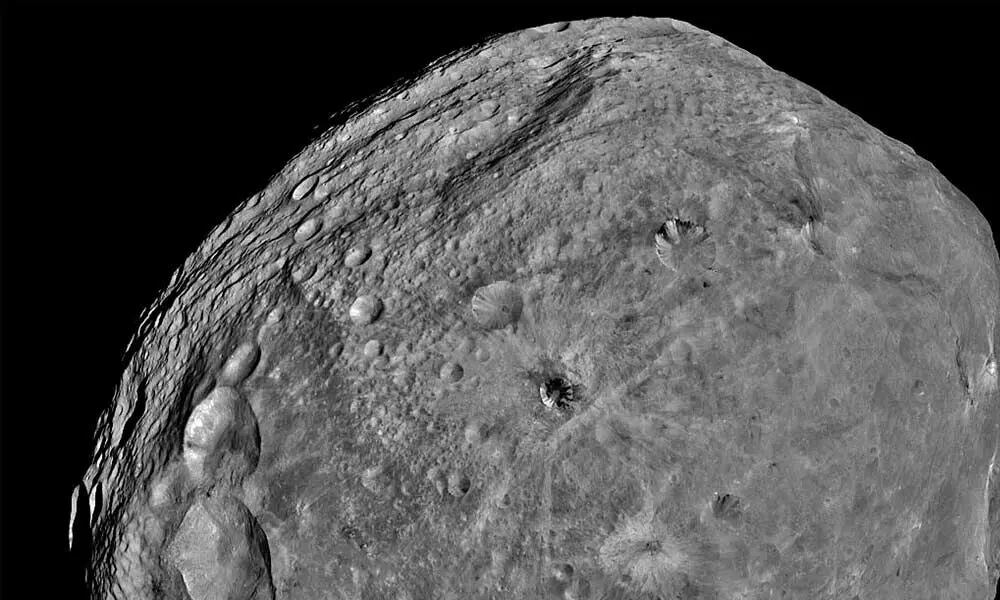Space mining on asteroids is never going to happen
Earth’s gravitational field poses a more technical problem
image for illustrative purpose

Power demands rise drastically once you move from exploration drilling to mining and processing. Bringing material back to Earth would raise the costs even more
Where would science fiction be without space mining? From Ellen Ripley in Alien and Dave Lister in Red Dwarf, to Sam Bell in Moon and The Expanse's Naomi Nagata, the grittier end of interstellar drama would be bereft if it weren't for overalled engineers and their mineral-processing operations.
It's such an alluring vision that real money has been put toward its realisation. Alphabet Inc.'s Larry Page and Eric Schmidt, and Hollywood filmmaker James Cameron (director of the Alien sequel Aliens) all invested in Planetary Resources Inc., which raised venture finance with its mission of mining high-value minerals from asteroids and refining them into metal foams that could be shot back down to Earth. Deep Space Industries Inc., a rival startup, also had bold plans to extract resources from space. Though both companies have now been bought out and their projects put into mothballs, the idea of a space mining industry has refused to die.
It's wonderful that people are shooting for the stars - but those who declined to fund the expansive plans of the nascent space mining industry were right about the fundamentals. Space mining won't get off the ground in any foreseeable future - and you only have to look at the history of civilisation to see why.
One factor rules out most space mining at the outset: gravity. On one hand, it guarantees that most of the solar system's best mineral resources are to be found under our feet. Earth is the largest rocky planet orbiting the sun. As a result, the cornucopia of minerals the globe attracted as it coalesced is as rich as will be found this side of Alpha Centauri.
Gravity poses a more technical problem, too. Escaping Earth's gravitational field makes transporting the volumes of material needed in a mining operation hugely expensive. On Falcon Heavy, the large rocket being developed by Elon Musk's SpaceX, transporting a payload to the orbit of Mars comes to as little as $5,357 per kilogram - a drastic reduction in normal launch costs. Still, at those prices just lofting a single half-ton drilling rig to the asteroid belt would use up the annual exploration budget of a small mining company.
Power is another issue. The international space station, with 35,000 square feet of solar arrays, generates up to 120 kilowatts of electricity. That drill would need a similar-sized power plant - and most mining companies operate multiple rigs at a time. Power demands rise drastically once you move from exploration drilling to mining and processing. Bringing material back to Earth would raise the costs even more. Japan's Hayabusa2 satellite spent six years and 16.4 billion yen ($157 million) recovering a single gram of material from the asteroid Ryugu and returning it to Earth earlier this month.
What might you want to mine from space? Water is an essential component of most earth-bound mining operations and a potential raw material for hydrogen-oxygen fuel that could be used in space. The discovery in October of ice molecules in craters on the Moon was taken as a major breakthrough. Still, the concentrations of 100 to 412 parts per million are extraordinarily low by terrestrial standards. Copper, which typically costs about $4,500 per metric ton to refine, has an average ore grade of about 6,000 ppm.
The more promising commodities are platinum, palladium, gold and a handful of rare related metals. Because of their affinity for iron, these so-called siderophile elements mostly sunk toward the metallic core of our planet early in its formation, and are relatively scarce in the Earth's crust. Estimates of their abundance on some asteroids, such as the enigmatic Psyche 16 beyond the orbit of Mars, suggest concentrations several times higher than can be found in terrestrial mines.
Still, human ingenuity is all about cutting our coat according to our cloth. If such platinum-group metals are going to justify the literally astronomical costs of space mining, they'll need to count on sustained high prices for the decade or so that would be needed to get such an operation up and running - and that sort of situation is all but unheard-of in the materials industry.
When prices of an essential commodity get excessively high, chemists get extraordinarily good at finding ways to avoid using it, scrap merchants improve their recycling rates, and miners discover new deposits that wouldn't have been viable at lower prices. Even criminals get in on the game. That eventually pushes supply up and demand down, so that prices rebalance - a dynamic we've seen play out in the markets for rare earths, lithium and cobalt in recent years. The world mines about three times more platinum than it did in the early 1970s, but prices have barely changed once adjusted for inflation.
That might sound a disappointing prospect to those looking for excuses for humanity to colonise space - but really it should be seen as a tribute to our ingenuity. Humanity's failure to exploit extraterrestrial ore reserves isn't a sign that we lack imagination. If anything, it's a sign of the adaptive genius that put us in orbit in the first place. (Bloomberg)
David Fickling

